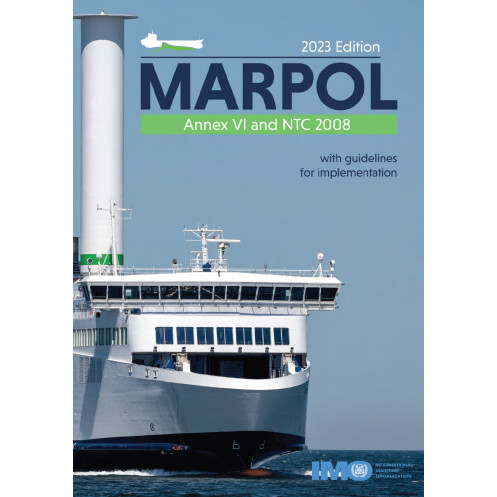




Data sheet
Specific References
 100% secure payments
100% secure payments








This book is available in hard copy and in digital format in a locked format to read with the IMO reader (free)
This publication presents the revised MARPOL Annex VI, Regulations for the prevention of air pollution from ships, and the updated NOx Technical Code 2008, including amendments adopted by resolutions MEPC.202(62), MEPC.203(62) and MEPC.217(63), as well as Guidelines and other information relevant to improved energy effi ciency for ships and the prevention of air pollution.
MARPOL Annex VI includes requirements for control of emissions from ships (chapter 3) and new regulations on energy effi ciency for ships (chapter 4) that entered into force on 1 January 2013. These make mandatory the Energy Effi ciency Design Index (EEDI) for new ships and the Ship Energy Effi ciency Management Plan (SEEMP) for all ships.
The updated text includes additional defi nitions, the requirements for the EEDI survey and certifi cation, the format for the International Energy Effi ciency Certifi cate (IEEC) and the following Guidelines to support uniform implementation of the EEDI and SEEMP:
The updated NOx Technical Code 2008 includes amendments relating to engines not pre-certifi ed on a test bed and to NOx-reducing devices.
This publication is of use to maritime administrations, classifi cation societies, shipping companies, education institutes, engine and equipment manufacturers and others with an interest in the prevention of air pollution from ships and in technical and operational measures to improve the energy effi ciency of ships.